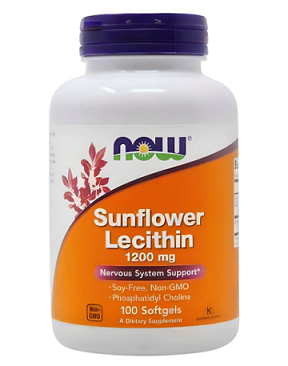Treating Plugged Ducts Naturally and Quickly
In one study, therapeutic breast massage in lactation was found to help reduce breast pain associated with engorgement, plugged ducts, stasis, and mastitis.

A plugged duct is formed when some of the milk inside a duct dries up and stops the rest of the milk from flowing. It is due mainly to not thoroughly draining the breast; this usually happens in the early days of breastfeeding, when a mother is engorged. Many moms may also notice lumps in their armpits during the first few days, this is normal.
Quick Page Links
Treating a clogged milk duct naturally and quickly
- Remove as much milk as possible
- Epsom salts soak
- Breast massage
- The way you breastfeed
- Pain relief
- Clear blocked pores
- Hot and cold compression
- Recurring episodes
- Therapeutic ultrasound
- Support
Blocked Milk Duct Symptoms
- It is sometimes felt as a hard lump that may be hot and tender.
- A plugged duct happens progressively and is usually only found in one breast.
- A blocked milk duct usually feels worse before feeding, while the breast is still full, and feels less sore after a breastfeeding session.
- Nursing on the side that has the lump could be painful, especially during a letdown.
- It is typically not associated with a fever. You should contact your doctor if you have a temperature of more than 38,5°C. It could indicate a mastitis infection.
- Milk supply may decrease temporarily.
- You may notice some thick, grainy milk.
- You may feel bruising in the area for about a week after the lump disappears.
10 Ways to Treat Plugged Milk Ducts Naturally and Quickly
#1 Remove as Much Milk as Possible
- Nurse and pump frequently to drain the breast (Pump at least every two hours). Breastfeeding on demand is best. If your breast is not completely drained after a feeding, you should try pumping.
- If the breast is too painful to breastfeed, you could use an electric breast pump.
- As mentioned below, a warm, moist compress will increase the milk flow; this can be done before you nurse or pump.
- Long breastfeeding sessions are recommended.
- Breastfeeding sessions should start with the infected breast. If the breast is too painful to achieve a letdown, you can breastfeed from the unaffected breast first to accomplish a letdown and then switch sides.

The Tushbaby Hip Carrier
With its ergonomic design and comfortable waistband, Tushbaby provides optimal support for you and your baby. Say goodbye to shoulder and back pain from traditional carriers, as Tushbaby evenly distributes your baby's weight, relieving strain and promoting better posture.
#2 Breast Massage
How to get rid of a clogged milk duct by massaging before, during, and after feedings.
1. Before a feeding, massage can soften a swollen, taut breast so that it is easy for the baby to latch onto.
2. During a feeding, movement, and compression towards the nipple will help the baby remove as much milk as possible.
3. After the feeding, you should massage the breast and express via hand expression or pumping; this will reduce the risk of another blockage or mastitis.
Other benefits include the following.
- In one study, therapeutic breast massage in lactation was found to help reduce breast pain associated with engorgement, plugged ducts, stasis, and mastitis.
- Some babies may refuse the breast during infection, and this is because of the elevated levels of sodium in the milk. Breast massage can help to reduce levels of sodium in the milk.
- Breast massage can be used to treat and prevent blocked ducts and mastitis—more information about the incredible benefits of breast massage and the step-by-step method here.
#3 The Way You Breastfeed
- Dangle feeding, as seen in the picture, will pull the blocked ducts open with the help of gravity. Also, trying different positions while breastfeeding might help the milk flow easier. Learn more about the benefits of dangle feeding.
- As mentioned above, If the breast is too painful to achieve a letdown, you can first breastfeed from the unaffected breast to accomplish a letdown and then switch sides.
- The baby should be positioned with the chin or nose pointing towards the affected area, which will help drain the blocked region.
- Latching on problems can prevent your baby from draining the breast efficiently. Tongue tie, cleft lip, and other sucking problems may cause issues. Deep attachment is extremely important. (1)
#4 Pain Relief
Pain relief is essential because the more pain you have, the less likely your baby will spend enough time at the breast to remove sufficient milk.
- You can use a cold compress after feedings for pain relief.
- You can use Ibuprofen or Acetaminophen.
- Breast massage, as mentioned above, helps to reduce pain associated with plugged ducts and breast infections.
#5 Clear Any Blocked Pores
If there is a little white spot or blister on your nipple, you can try puncturing it with a sterile needle, then allow your baby to drain it. Pores left unclogged can easily lead to blocked milk ducts.
#6 Hot and Cold
A heated compress can be applied to the breast before feeding to encourage milk flow, while a cold compress can be used after a feeding to reduce pain and swelling (edema).
#7 Epsom Salts
An Epsom salt bath is believed to have anti-inflammatory properties due to its magnesium and may help ease the pain and inflammation caused by plugged ducts. You can soak your breasts in warm water with some Epsom salts added. (One handful of Epsom with every 2L of water) Remember to rinse your breasts afterward to remove the saltiness.
An Epsom salt alternative for clogged milk duct - Baking soda can be used as an alternative. It can draw out impurities and toxins from the skin, improving the immune system and preventing the accumulation of toxins. Bicarb can also reduce skin irritation and itching.
#8 Lecithin
What about preventing recurrent plugged milk ducts?
For those struggling with chronic bouts of plugged ducts, it can help to add one tablespoon of Lecithin to your diet every day. Some women experience fewer blocked ducts when they also decrease their consumption of saturated fats.
More information about sunflower lecithin for clogged duct.

#9 Therapeutic Ultrasound
If the plugged duct does not clear within two days, you can try therapeutic ultrasound at your local physiotherapy office. (2 watts/cm2, continuous, for five minutes to the affected area, once daily for two days.)
#10 Get Support
It would be a great idea to join a local La Leche League; they can offer helpful information and support. LLL support is free to all mothers and their families.
Causes & Prevention of Plugged Ducts
- Tight bras or sleeping on your stomach will restrict the milk flow, resulting in blocked milk ducts. Underwire bras should be avoided. Try to keep the pressure on the breasts to a minimum. Also, stay away from heavy arm exercises.
- Dehydration, malnourishment, and excessive stress can put a mother at risk.
- Plugged ducts will often occur during weaning, which is why weaning should always be gradual.
- Mothers with oversupply issues are at higher risk.
- A blocked nipple, if not treated, can lead to blockages in the ducts.
- Skin damage from cracks and sores on the nipple may open the door to pathogens, which could lead to an infection.
- Avoid the use of pacifiers, artificial nipples, and supplemental feedings. These things can decrease the milk flow and put a mother at risk. Skipping of feeds should be avoided.
- A low immune system and smoking cigarettes can put a mother at risk for plugged ducts and mastitis.
- During teething, a baby may refuse the breast, which can cause milk stasis, leading to blockages.
- Women with previous breast surgery, such as augmentation, breast reduction, and tumor or cyst removal, will be at increased risk.
- Untreated yeast infections can lead to breast inflammation and possibly mastitis.
- Women who return to work need to be aware of the risk of blocked ducts if they are not regularly emptying their breasts. They also need to make sure that they are getting an adequate amount of rest.
What About Mastitis?
Most of the time, if a mom continues to breastfeed on demand, a blocked duct will disappear within two days. With that being said, mothers should not ignore symptoms. A plugged duct, if not treated, can turn into mastitis, which can turn into a breast infection (infected milk ducts) and ultimately into an abscess.
A mother mustn't stop breastfeeding when she has a blocked duct, as this could cause an increased build-up of fluid, making a mastitis infection more probable.
Mastitis is suspected if a mother starts to feel flu-like symptoms. A breast ultrasound examination may be necessary in the case of a high fever of 38.5°C and above. Abscesses need to be treated as quickly as possible because they can spread. If no improvement is seen after two days on antibiotics, a breast milk culture will be taken for sensitivity testing.
Breastfeeding can continue during milk stasis, mastitis, and even an abscess. It cannot harm the baby. The flow of milk will help to clear the ducts of infective organisms.
References:
1. Deep attachment.
https://onlinelibrary.wiley.com/doi/abs/10.1111/j.1651-2227.2008.00911.x
Katsumi Mizuno Yoshiko Nishida Noriko Mizuno Motohiro Taki Masahiko Murase Kazuo Itabashi
2. https://www.karger.com/Article/Pdf/272223
Michael Abou-Dakna
Anna Richardta
Ute Schaefer-Grafa
Achim Wöckelb
3. https://www.sandiegocountymidwives.com/wp-content/uploads/pdf/breastinfectionscnb2010.pdf
Comments
Bonnie Tilson
Pittsburg, Pennsylvania, USA
Clogged Milk Ducts and Mastitis
by Baby #2
"I'm so glad to have come across your page! I'm breastfeeding my second child. The first I had no problems with. But my new baby is 2.5 months old, and already I've had clogged milk ducts four times, 2 of which turned into mastitis.
Baby has also had thrush (I got it, too, OUCH!) I am currently battling SORE and cracked, sometimes bleeding nipples.
This current round of mastitis feels like it might be my entire left breast! In just looking at your site for the few minutes I have, I've found a few things I can start doing differently.
I'm so glad to have found so many answers in one spot!"
Recurrent Plugged Ducts-Finally Solved
by Amanda
"I love this post! So detailed! It helped me a few times. I struggled through multiple plugged ducts per week for almost ten months.
Finally, I discovered my daughter's undiagnosed lip tie. She had a frenectomy on her tongue tie a few days after birth, but no one noticed her lip tie (class 4!). Now that she has had that treated, breastfeeding is a different experience.
I just thought I'd share if anyone else could be toughing it out as I did.
Suffered from Plugged Ducts
by mavis
(Pretoria)
"I suffered from that, and little did I know what was happening; I consulted my GP, who said I must breastfeed more and use hot compressions!
And I did it, and it helped a lot; I stood in a warm shower before breastfeeding!
And I must say breastfeeding was a nightmare; it was excruciating! But I'm glad the advice I got helped me."
